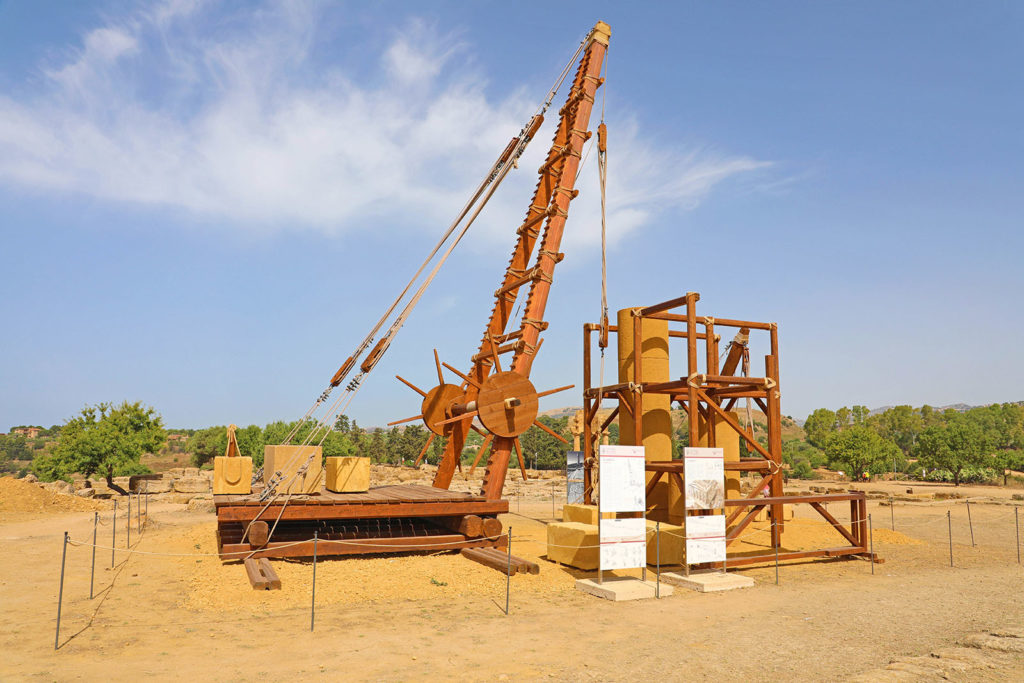Temples were considered the houses of the gods and so stood out from all other buildings for their size, choice of precious materials and rich ornaments. These monumental structures were built by specialised teams that would even take decades to complete the most majestic temples.
In Akragas, all monuments were built in
calcarenite
a stone from the numerous quarries around the city. In order to extract the blocks, the rock was slowly cut to form furrows into which wood was then inserted. When wet, the wood swelled until the stone broke.
To transport the blocks, highly ingenious machines were used that made it possible to roll them directly on the ground, pulled by people or animals.
Once at the building site, the blocks had to be lifted, so the ancients invented the ancestors of today’s cranes. These machines consisted of two long wooden beams fixed to the ground on one side, and joined together on the other.
 Here, on the top, there were pulleys that used ropes to lift even the heaviest blocks.
Here, on the top, there were pulleys that used ropes to lift even the heaviest blocks.
Once the temple had been erected, decorations and
natural colours
were used.
On the
pediment
, the
triglyphs
were coloured blue and alternated with red
metopes
.
The pediment was also decorated on the top and sides with monumental palmettes, while the roof, made with painted
terracotta
tiles, increased the temple’s rich liveliness.
The buildings generally faced towards where the sun rose, and inside the cella (shrine), accessible only to the priests and priestesses, there was a statue of the deity in whose honour the buildings were erected.